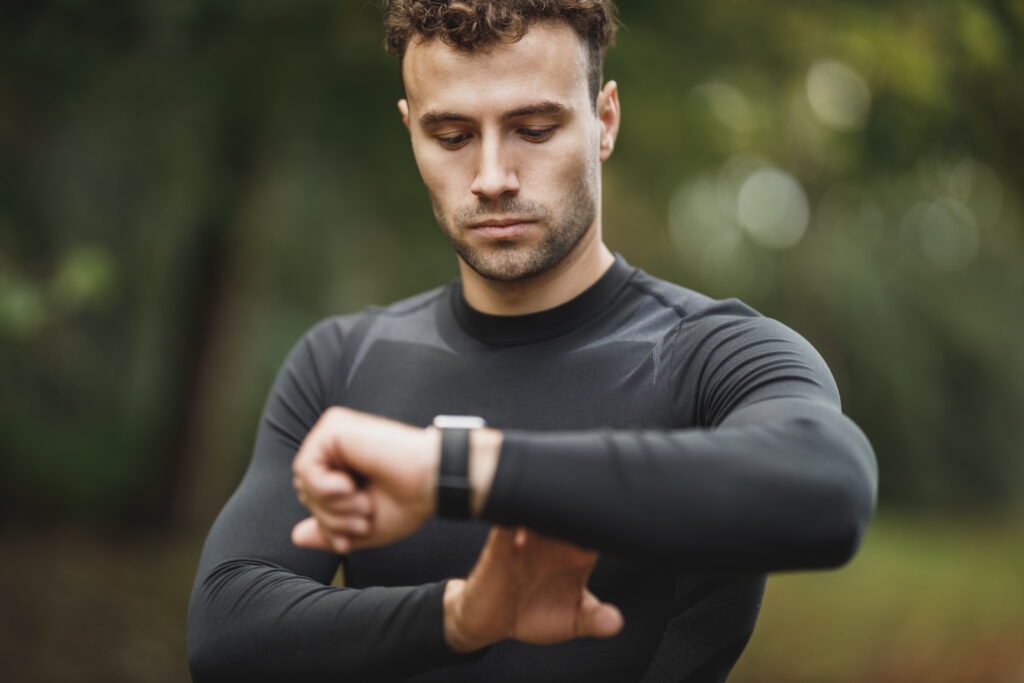
What the Numbers Really Mean
We’ve all seen it. You finish a workout, glance at your watch, the treadmill screen, or the big display at OrangeTheory, and there it is—a calorie number, sometimes surprisingly high, sometimes disappointingly low. But how accurate is that number? What does it really tell you about the work you’ve done?
The truth is, heart rate and calories burned are related, but they’re not the same thing. And depending on how they’re being measured—whether by your Apple Watch, the console on a rowing machine, or a gym’s heart rate monitoring system—those numbers can be close to reality or far from it.
If you want to understand what you’re actually burning in your workouts, and how that ties into goals like weight loss, it helps to know how these numbers are calculated, where they’re accurate, and where they can lead you astray.
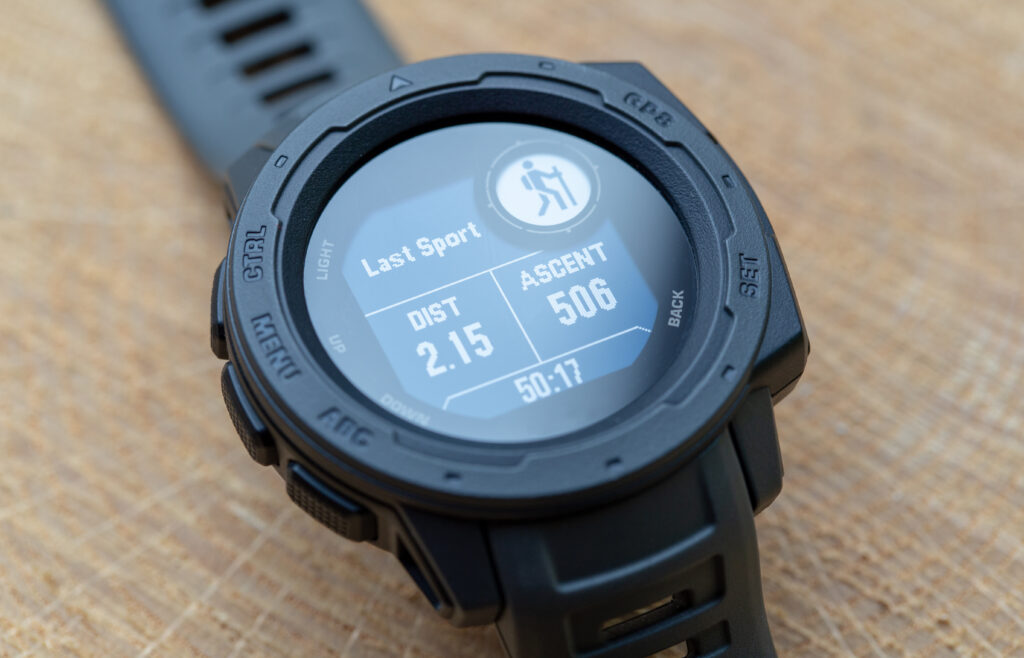
Heart Rate vs. Calories Burned: Why They’re Not the Same
Heart rate is simply the number of times your heart beats per minute—a measure of cardiovascular effort. Calories burned, on the other hand, is the total energy your body uses to power everything you do, from lifting weights to digesting lunch.
These two metrics often move in the same direction—work harder, and your heart rate goes up, which usually means more calories burned. But they don’t track each other perfectly. Your heart rate can rise for reasons that have nothing to do with calorie burn—like caffeine, heat, stress, or dehydration. And two people with identical heart rates during a workout can burn very different amounts of energy depending on their body weight, muscle mass, and efficiency.
Here’s the key: heart rate is a useful measure of intensity, but it’s not a direct measure of energy expenditure. That’s why using heart rate alone to calculate calorie burn always comes with a margin of error.
How Wearables Estimate Calories
Devices like the Apple Watch, Fitbit, or Garmin calculate calories using three main ingredients:
- Your personal stats (age, sex, height, weight) → used to calculate your basal metabolic rate (BMR), or the calories you’d burn at rest.
- Movement data from accelerometers and gyroscopes to track how much you’re moving and how fast.
- Heart rate tracking, often with GPS integration, to gauge workout intensity.
The watch’s software combines these inputs to estimate your calorie burn using a formula. In steady-state cardio, especially at moderate to high intensity, this can be fairly close to reality. But in activities like strength training, HIIT, or anything with frequent starts and stops, accuracy drops. Studies show wearables can be off by 20–50% for calorie estimates—sometimes more.
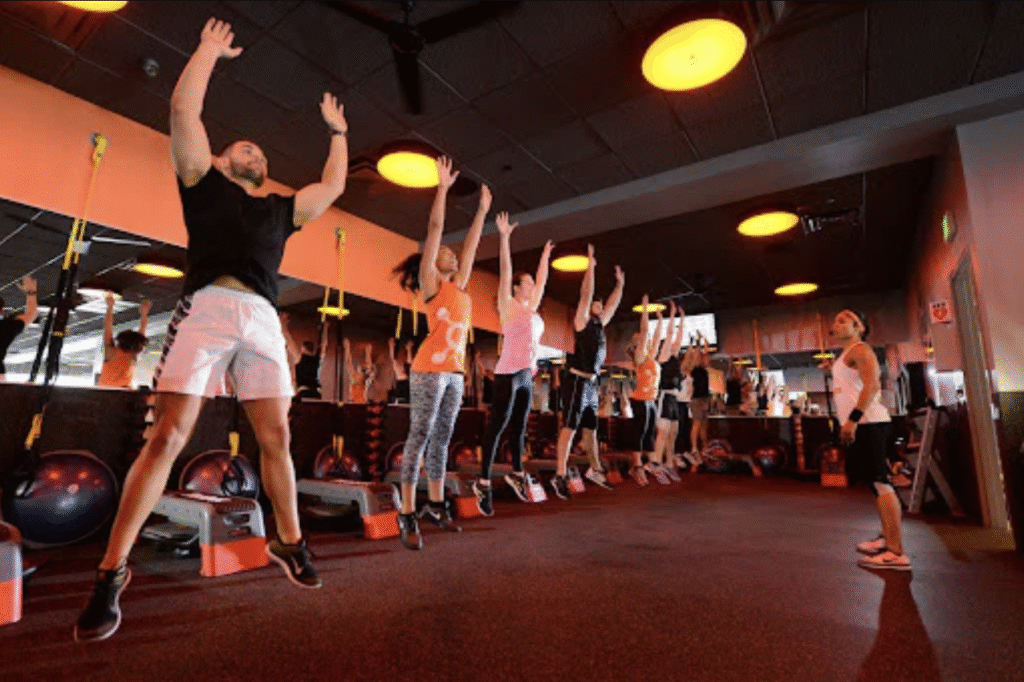
Why OrangeTheory’s Calorie Numbers Can Be Misleading
OrangeTheory uses branded heart rate monitors (worn on the arm, wrist, or chest) that display your heart rate, “Splat Points” (time spent in higher heart rate zones), and estimated calories on big studio screens. The heart rate tracking itself is generally accurate. The issue lies in how that heart rate gets converted into calories.
OTF’s algorithms often report higher calorie burns than other devices for the same workout. Part of this is how they factor in the “afterburn” effect—extra calories burned after intense exercise, known as EPOC (excess post-exercise oxygen consumption). While EPOC is real, research shows its magnitude is smaller and shorter-lived than many marketing claims suggest.
The takeaway: OrangeTheory’s calorie numbers can be great for motivation, but they’re not precise enough for tracking exact energy expenditure or planning your nutrition down to the calorie.
Calorie Estimates on Cardio Machines
Most cardio machines calculate calories using mechanical work, not your actual metabolism.
- Treadmills: Measure speed and incline, apply a formula to estimate calorie burn, assuming average efficiency.
- Rowers (e.g., Concept2): Measure flywheel deceleration and drag factor to calculate watts, then convert to calories assuming a fixed efficiency (about 25%).
- Air bikes (e.g., Rogue Echo, Assault): Measure fan resistance and cadence to calculate watts, then estimate calories—still assuming average human efficiency.
These estimates are usually more consistent than wearables for that specific activity, but they’re still based on population averages, not your exact physiology.
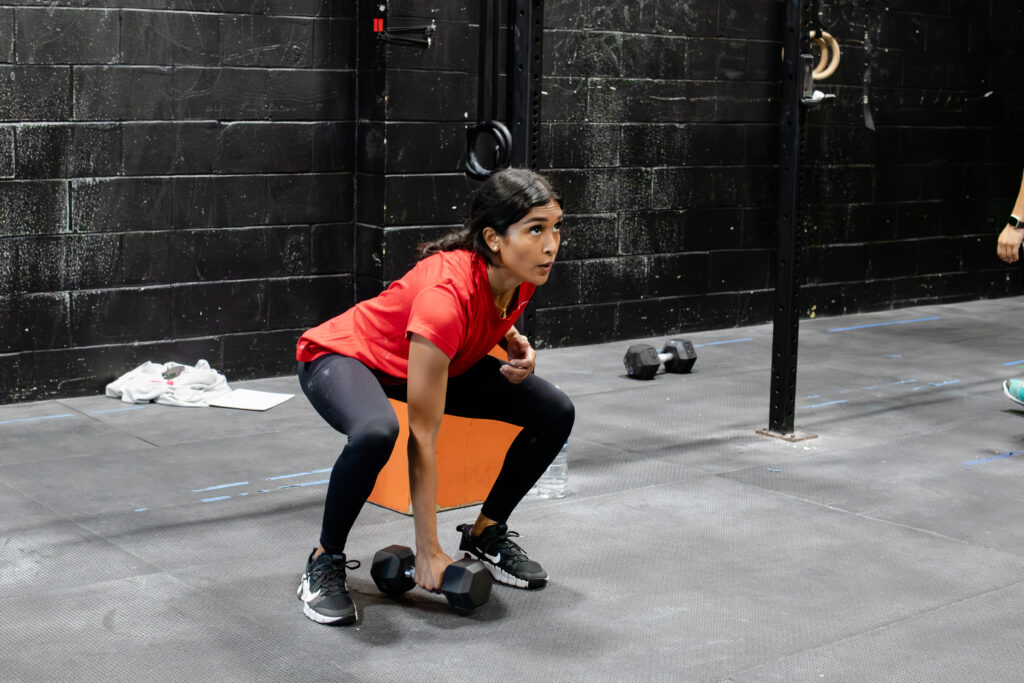
Estimated Calorie Burn by Activity (1 Hour)
Calories burned in an hour depends on body size, muscle mass, age, gender, fitness level, and efficiency. The ranges below assume a body weight between 150–200 lbs and moderate-to-high intensity.
Strength Training with Weights
Range: ~180–360 kcal
- Lower end: lighter weights, long rest periods.
- Higher end: heavy compound lifts, short rests, or circuit style training.
- More muscle mass means greater power output and often higher calorie burn, but also more efficiency in trained lifters.
Typical CrossFit Class (20-min metcon + warm-up, skill work, cooldown)
Range: ~250–500 kcal
- Burn depends heavily on intensity during the metcon.
- Larger athletes and those with more muscle mass typically burn more.
- Beginners may feel like they’re working harder but may still burn fewer calories if total work is lower.
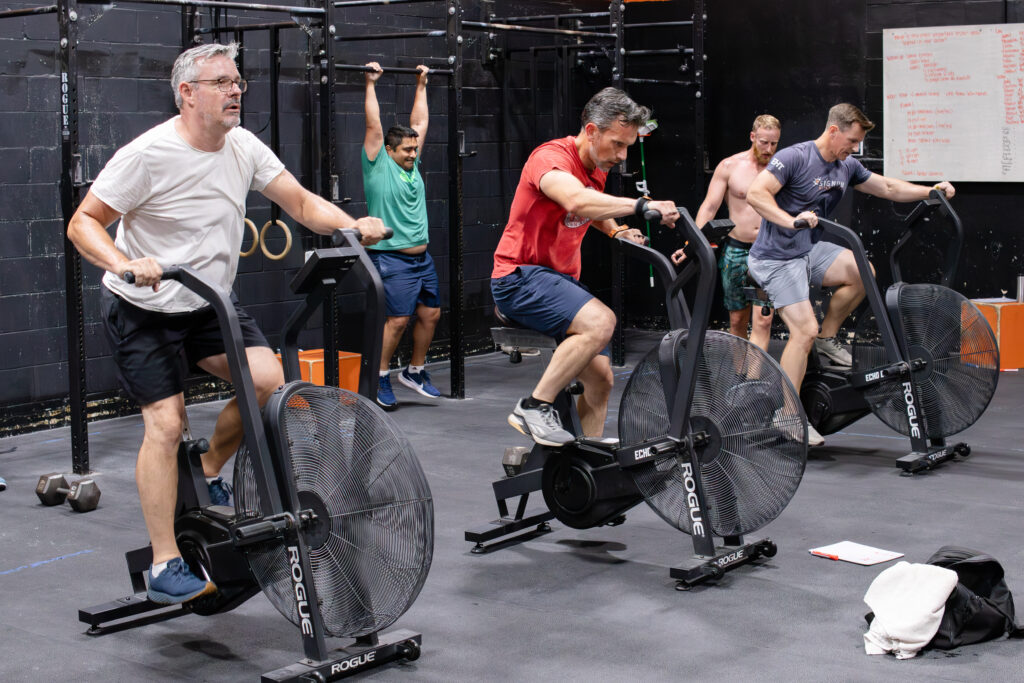
Rowing at 2:30/500m Pace (~600 cal/hr on Concept2)
Range: ~500–700 kcal
- Rowing uses nearly every major muscle group.
- More muscle mass and higher body weight generally mean more calories burned at the same pace.
- Beginners may burn slightly more at first due to inefficiency, but fitter rowers can sustain higher wattage for longer.
Walking 10,000 Steps (about 5 miles for most people)
Range: ~350–500 kcal
- Burn depends on walking speed, terrain, and body weight.
- Larger individuals or those walking briskly will be toward the higher end; smaller individuals or leisurely walkers toward the lower.
- While less intense than many gym workouts, daily walking adds up significantly over weeks and months.
Yoga
Range: ~150–300 kcal
- Lower end: gentle, restorative styles.
- Higher end: vigorous flow or power yoga with continuous movement.
- Benefits extend beyond calorie burn—mobility, recovery, and stress reduction.
How Personal Factors Change the Numbers
Body weight
When you move, your body must generate force to overcome gravity and move your mass through space (or against resistance). The more you weigh, the more energy it takes to do the same movement—whether that’s running a mile, doing a set of squats, or rowing at a fixed pace. This applies to both muscle and fat mass, though muscle also contributes to higher calorie burn for other reasons.
Muscle mass
Muscle tissue is metabolically expensive. It requires energy to maintain, repair, and fuel during movement. Someone with more muscle mass can generate higher force, which often translates into greater power output and, therefore, more calories burned—especially in strength or power-based activities. However, they may also be more efficient in their movement, which can slightly reduce burn at submaximal efforts.
Age
Without resistance training, most people lose muscle mass as they age, which lowers total calorie burn. Hormonal changes, reductions in activity levels, and slower recovery rates can all play a role. That said, active older adults who maintain muscle can keep their calorie burn closer to younger counterparts.
Gender
On average, men have more lean muscle mass and less body fat than women, leading to higher calorie burns at the same workload. Hormonal differences also affect how energy is used, but the primary driver here is body composition, not sex alone.
Fitness level
A beginner often moves less efficiently—meaning they burn more calories to achieve the same pace or workload, at least initially. Over time, as fitness and movement economy improve, they may burn fewer calories for the same task, but they’ll be able to sustain higher intensities for longer, raising total energy expenditure in harder sessions.
How to Use These Numbers Wisely
It’s tempting to treat calorie numbers from your watch or gym machine as absolute truth, but they’re best viewed as educated guesses. Even with the best technology, these are still estimates, and the real value lies in understanding the range you might fall into rather than the exact figure. For example, instead of believing you burned exactly 612 calories in a CrossFit class, it’s more useful to assume you burned somewhere in the 250–500 calorie range and plan your expectations accordingly.
If your goal is weight loss, this perspective is even more important. Chasing precise calorie counts often leads to frustration because the numbers fluctuate from day to day, and they’re never perfectly accurate. A far more sustainable approach is to focus on building the habit of daily activity—whether that’s a workout at the gym, a walk at lunch, or active hobbies. Over time, this consistency is what drives meaningful results, not a single workout’s calorie readout.
You can improve the usefulness of wearable data by keeping your personal stats up-to-date, wearing your device correctly, and using the right workout mode for the activity. This ensures the estimates are as close as possible and makes your trends over time more reliable. But remember: the goal is not to “win” the calorie game in a single workout—it’s to create a lifestyle where regular activity and balanced nutrition work together over the long haul.

Tying It Back to Your Goals
If your goal is weight loss, remember that exercise is only one side of the equation. Nutrition plays a huge role in determining whether you’re in a calorie deficit. Exercise is incredibly valuable—it supports muscle maintenance, improves health, and boosts your metabolism—but you can’t outwork a consistently poor diet.
Think of calorie numbers as context, not currency. Use them to understand your effort and stay motivated, but put most of your energy into sustainable eating habits and consistent daily movement. Over time, this approach will deliver better results than obsessing over any single number your watch or machine gives you.

Leave a Reply